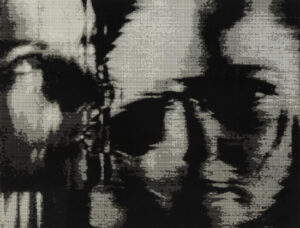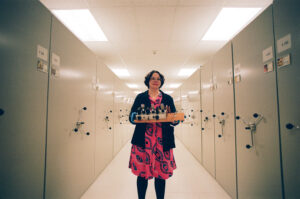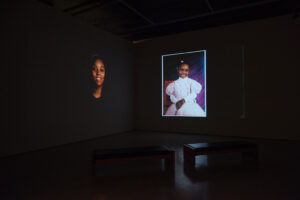Lillian Schwartz. Self Portrait, circa 1979. Reproduction of screenprint on paper. Courtesy of The Henry Ford. Gift of the Lillian F. Schwartz & Laurens R. Schwartz Collection.
Lillian F. Schwartz (b. 1927) is an American artist who worked at the forefront of computer art in the late-1960s. As a “resident visitor” at Bell Laboratories (1968-2002), she uncovered new ways to merge art, science, and technology.
The theme of movement is threaded throughout Lillian’s life. While recovering from polio paralysis, she began to create art in her head. She went on to produce layered paintings and kinetic sculptures. The importance of motion is undeniable in her groundbreaking computer films, animation, and early digital art.
A lifelong learner, Lillian helped define and expand the boundaries of digital creativity in a time before home computers were available.
“One of the intriguing aspects of a computer is that an artist can no longer say ‘I can’t draw a straight line.’ Instead, the problem is, how do I get my computer not to draw a straight line?” – Lillian Schwartz
Lillian Schwartz’s work reminds us that the digital is always inspired by and grounded in the physical. AI, the internet, and automation – must all first be imagined by a person and can only exist in the physical structures of computers and infrastructure.
Human creativity drives the digital imagination.
This exhibition of Lillian Schwartz: Whirlwind of Creativity is made possible through the generosity and partnership of the Henry Ford Museum. Their exhibition of the same name is on display at the Henry Ford Museum in Dearborn, Michigan until March 2024.








